Composite pools: pros and cons, choice

It would seem that installing a pool on your site implies a long and laborious process, which, in turn, is expensive. Indeed, until quite recently everything was so. Today, in connection with the development of new technologies, one can become the owner of a beautiful artificial reservoir thanks to the ability to install a composite pool without much effort.
What it is?
A composite pool is a swimming tank, which is made on the basis of plastic with the addition of other components to it. A distinctive feature of this design is considered the possibility of its use not only for the season, but also as a year-round structure due to the possibility of covering.
Composite compound is one of the types of polymer products that are reinforced with strong synthetic fibers. These composite characteristics allow the fabrication of alloys that can withstand water pressure in large structures. Typically, the service life of this type of pool is from 15 to 20 years, however, the external characteristics of the structure are not always preserved so long. The product may be affected by ultraviolet light, a sharp temperature drop, and all sorts of chemical compounds.
The composite pool alloy is characterized by strength and durability when handled carefully. In addition, it allows you to create designs with different shapes and sizes.
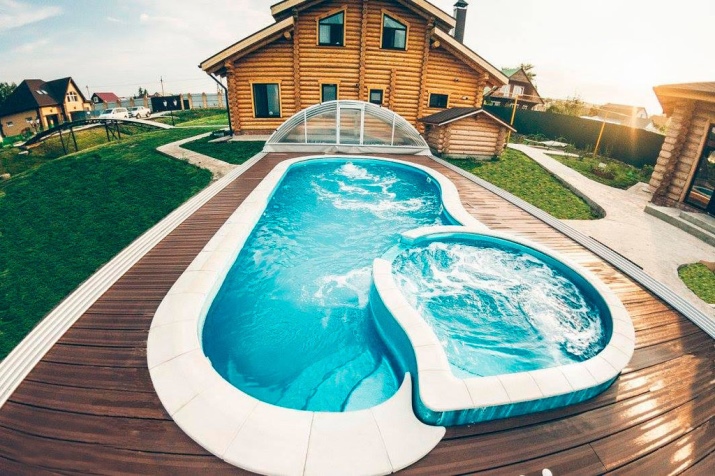

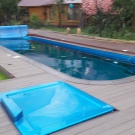
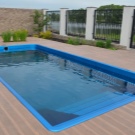
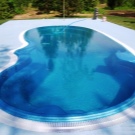
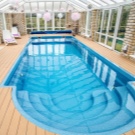
Advantages and disadvantages
Composite materials are becoming more and more popular due to the peculiarities of their composition and further use. The advantages of outdoor composite pools include the following:
- simplicity and speed of the bowl installation process, since it does not need additional finishing;
- strength and durability;
- a wide variety of appearance, dimensions and colors;
- light weight, which contributes to the self-assembly of the pool;
- low cost, which cannot be said about pools made of other materials;
- lack of seams and grooves on the surface, which means hygiene and ease of maintenance.

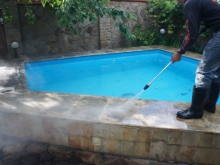
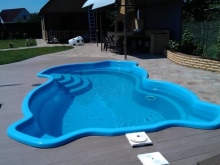
In addition to all of the above advantages of composite pools, people who want to install them on their site should remember some disadvantages.
- Complexity of installation of the structure inside the building - the composite structure is mounted before the walls are erected in it. Otherwise, the installation of an artificial reservoir in the building will be impossible as well as its dismantling.
- The need for careful use, as the material is easily damaged, especially in winter.
- Possibility of the bowl floating up when it is emptied.
- Installation of a composite pool in the area where the power grid, air or gas underground communications are located is impossible.
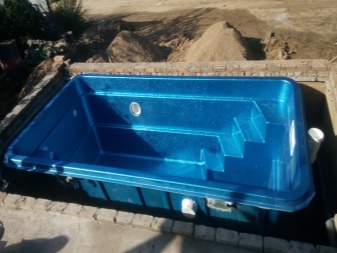
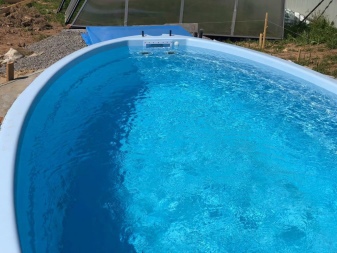
Species overview
Composite pools can be of various shapes and complexity. Currently, you can find bowls in the form of an oval, rectangle, circle, as well as an indefinite shape. The color of this artificial reservoir can be green, blue, light blue, brown-emerald and any other.
Filtration is the most important part in the functioning of the pool. According to the method of water intake, composite artificial reservoirs are divided into the following types:
- skimmer;
- overflow.
In the first case, the water is taken to the filtration process by a skimmer, which is made of steel or high quality plastic.In overflow - water intake occurs from the entire perimeter of the structure. Thus, the polluted liquid on the water surface does not have time to stagnate. The bottom location of the nozzles helps to lift all the dirt into the upper layer of water.
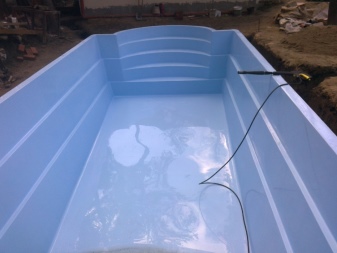
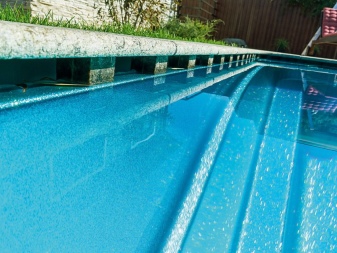
Dimensions (edit)
Composite pools can have a wide variety of dimensions depending on the shape. After determining the site on which the artificial reservoir will be located, you can select a design from the manufacturer with suitable dimensions. Most often, there are models with a depth of 1.5 meters.
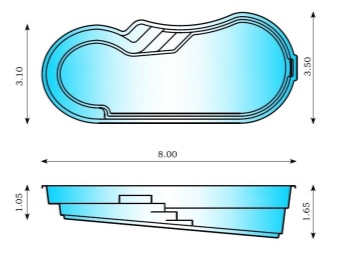

Top manufacturers
In order for the composite pool to serve for a long time, experts recommend purchasing them in Russia or neighboring countries. Belarusian products are characterized by good operational capabilities.
Several firms have been recognized as the best manufacturers of recent times.
- Eri. Pools from the Composit Group are characterized by an advantageous ratio of cost and quality.
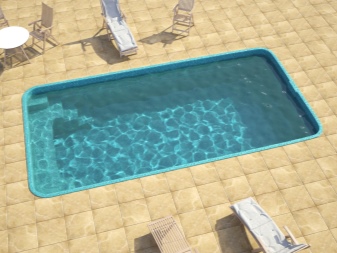
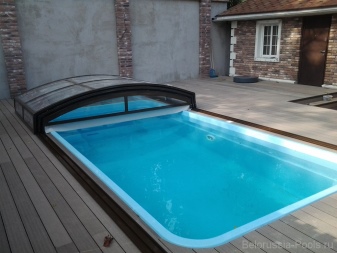
- Toba made in Lithuania. The Luxe Pools company produces goods not only with the required thickness, but also with the insulation of the product. In order for the consumer not to have problems with the operation of the pool, the manufacturer has added ergonomics to it.
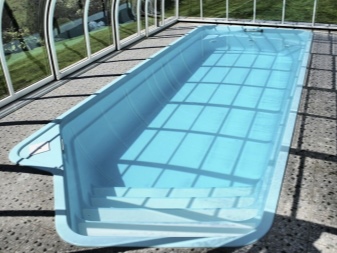
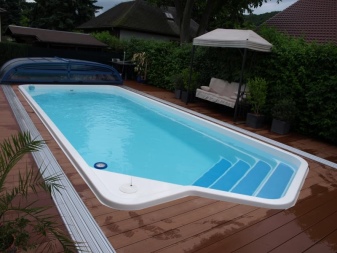
- Minipool. This model of an artificial reservoir is produced by the Russian company San Juan. Products are characterized by a wide range of shapes and colors. Pools do not have insulation, but at the same time they are quite practical. Minipool has a high durability and an affordable price point.

- Admiral pools produced in St. Petersburg. Pools have affordable prices, but the range of products allows the consumer to choose the most suitable option. The length of the structures is up to 14 meters, and their depth is 250 centimeters.
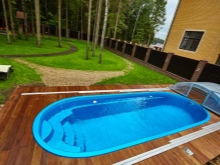
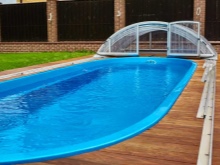
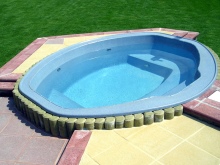
- Franmer. Russian-made composite pools have reinforced stiffeners, so they are durable. They perform well in the Russian climate.
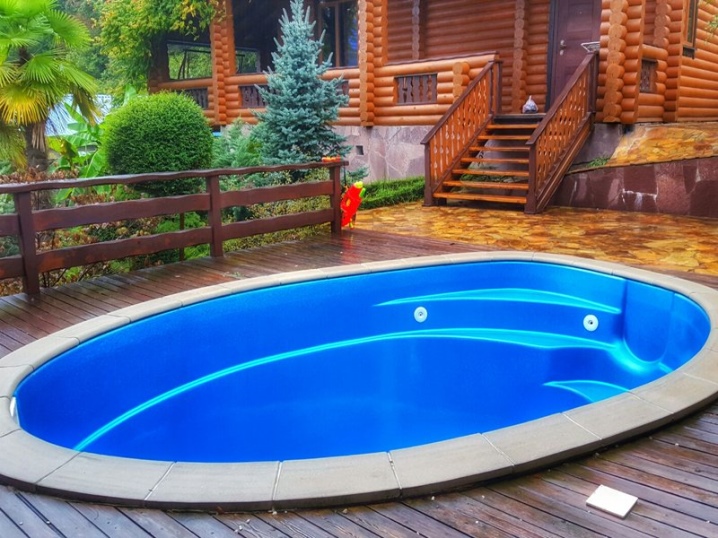
- Compass Ceramic Pools Is a Russian brand that manufactures swimming pools in Krasnodar. Riverina, X-Trainer are models with attractive appearance and good ergonomics.
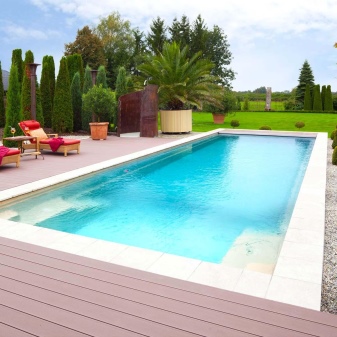
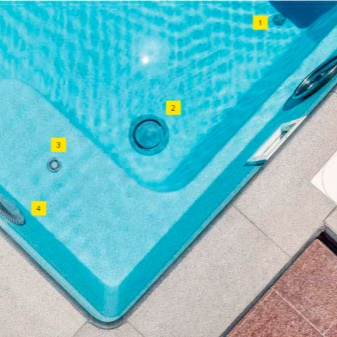
Installation rules
Due to the design features, the installation of a composite product can be done without the help of specialists with your own hands. The procedure will require not only some skills, necessary components, but also knowledge of how to install an artificial reservoir step by step on your site.
Pit preparation
First, you need to dig a pit in a horizontal area, while its dimensions should be 50 centimeters larger than the contours of the composite structure. The depth should be 15 centimeters higher than that of the pool. This work can be done both with your own hands and by hiring a worker with an excavator.
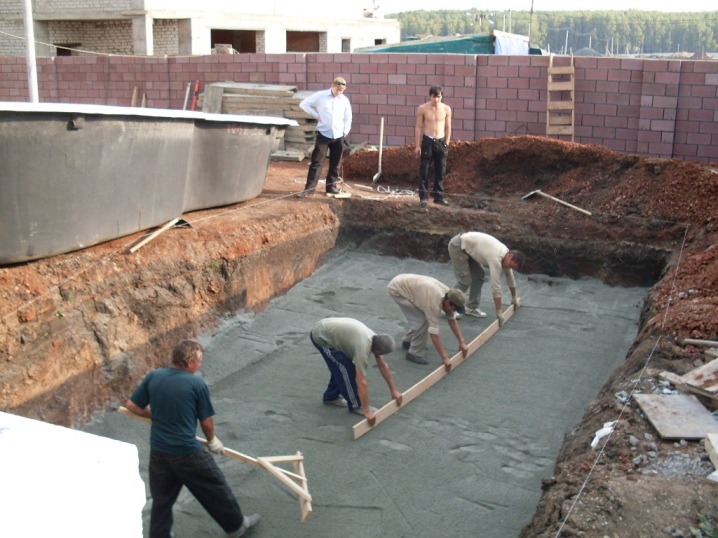
Laying the release layer
The land must be separated from the base of the pool with geotextiles. During the installation of the composite pool, the entire section of the pit should be laid out with geotextiles. At the joints, it is worth making an overlap equal to 25-30 cm.
Dumping device
The bottom of the pit should be covered with rubble, while its thickness should be at least 15 centimeters. For this purpose, it is worth taking crushed stone, the fraction of which is 5/20 or 20/40. The filling is carried out using beacons, the distance between which should be from 100 to 150 centimeters. After the crushed stone is poured, it should be carefully tamped.
At the end of this procedure, it is worth determining visually whether there are any sharp protrusions on the surface.
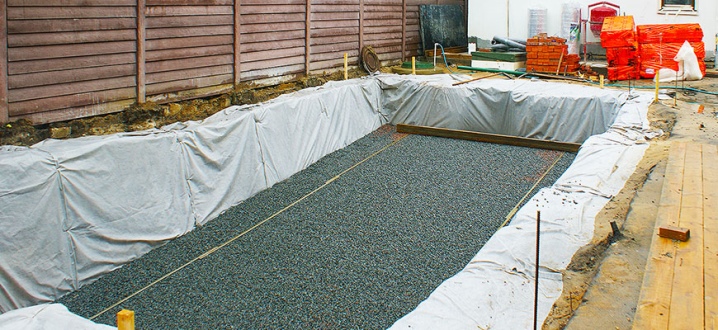
Pool installation
The composite structure can be installed by immersing it in a prepared foundation pit. Wherein you can use both your own strength and special equipment.
Backfilling of side walls
The final stage in the installation of an artificial reservoir is the backfilling of the walls from the sides. In this case, all mortgages must already be installed, and the pool itself is located at the level.The side walls are usually covered with crushed stone, starting from the corner sections. For in order to fix the composite structure in the pit, it is worth filling its corners by 2/3 of the part with crushed stone.
After the procedure, it is worth pouring water into the pool, gradually pouring out the side parts. The work is carried out until the level of water and rubble is leveled. Connecting equipment that facilitates the drainage of water is required when servicing and filling the bowl with liquid.


If the pool is installed indoors, then the size of the sections should be taken into account, which must equal the dimensions of the doorway. Often people who decide to install a composite pool on their site are concerned about the need for grounding. Since the material of manufacture of this artificial reservoir has conductive characteristics, grounding is not necessary in this case.
The maintenance of a composite artificial reservoir includes its regular cleaning with a water vacuum cleaner, replacement of filtration elements, as well as general cleaning with chemicals. If the bowl of the structure is damaged, then first of all it is worth emptying the pool, and then proceed with its repair.
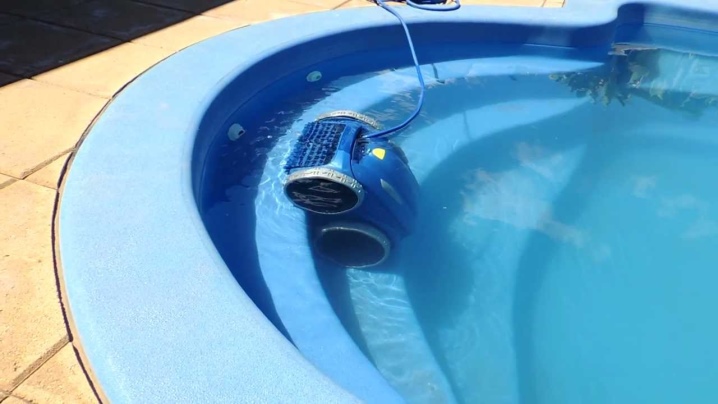
From all of the above, we can conclude that a pool of this type is a convenient and durable product. In order for it to be used for a long time, the owner should correctly install and carefully use the structure.
About which pool is better - composite or polypropylene, see below.



































































The comment was sent successfully.